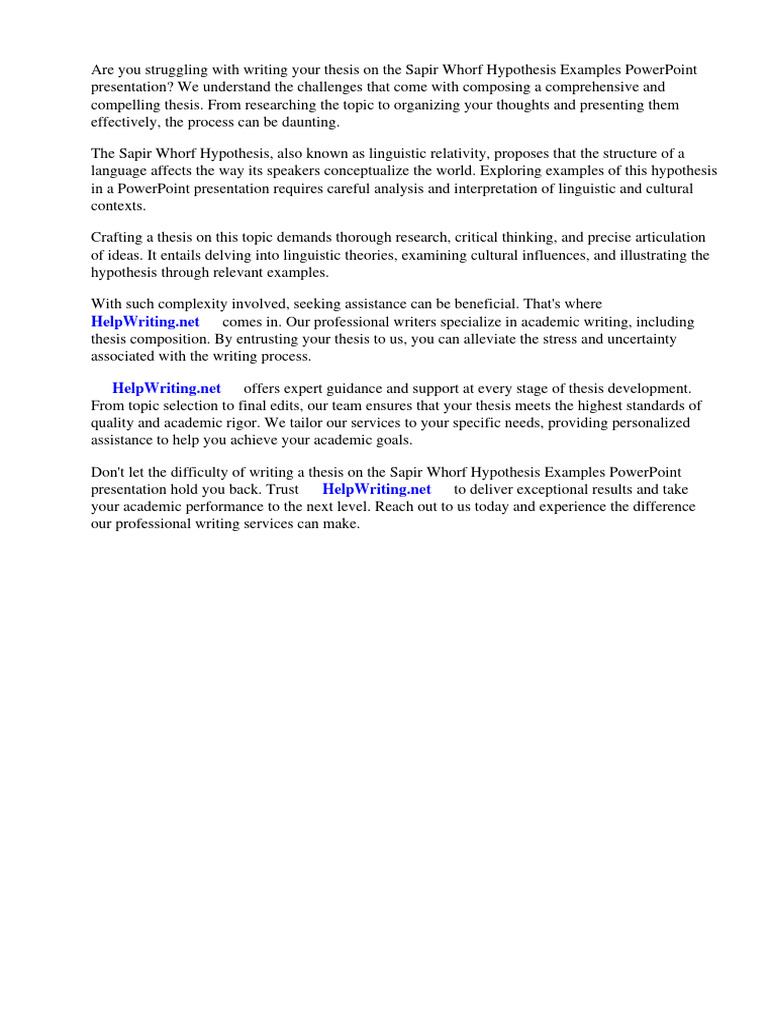The Sapir-Whorf Hypothesis, positing that the structure of a language influences its speakers’ worldview and cognition, invites us to consider how diverse linguistic frameworks shape perceptions of reality. A particularly intriguing illustration of this theory can be found in the language of the Inuit people, often referred to as “Eskimos.” This term, although considered outdated and imprecise, relates to various indigenous groups in the Arctic regions. The fascination surrounding the vocabulary related to snow within these languages serves as a profound example of the Sapir-Whorf Hypothesis in action.
At the heart of the discussion is the notion that the Inuit languages possess a rich lexicon for snow, encompassing several words that describe different types and conditions of snow. For instance, terms such as *qanik* (falling snow), *aput* (snow on the ground), and *pukak* (crusty snow) reflect a level of specificity that is markedly absent in English. This extensive terminology reveals more than mere linguistic difference; it points to a cultural and environmental relational dynamic that shapes how the Inuit perceive their surroundings.
From an anthropological standpoint, one might consider why such a specialized vocabulary for snow exists. The Arctic landscape, characterized by its harsh winters and variable forms of precipitation, demands a nuanced understanding of snow for survival. The ability to articulate the precise type of snow can be the difference between life and death, influencing decisions related to hunting, travel, and shelter construction. This necessity fosters a heightened awareness of environmental conditions, shaping a distinctive ecological consciousness among its speakers.
In stark contrast, the English language, which may ostensibly possess only one term for snow, reflects a different environmental interaction. Most English speakers reside in temperate or tropical climates, where snow is infrequent and not central to their daily experiences. The linguistic limitations are arguably indicative of a broader cultural disposition that prioritizes different environmental features over those found in Arctic settings.
The Sapir-Whorf Hypothesis thus extends beyond mere vocabulary; it delves into how linguistic structures can mold cognitive perceptions. For example, the use of multiple terms for snow in Inuit languages may enhance an individual’s ability to differentiate among various types, ultimately leading to a more acute awareness of their surroundings. This ability affects not only day-to-day life but also impacts cultural practices, social interactions, and even storytelling traditions, reinforcing community bonds through shared knowledge and experiences centered on the environment.
Moreover, the implications of the Sapir-Whorf Hypothesis reach far into the domain of environmentalism. Understanding how language influences thought processes can aid in conservation efforts. The way people narrate their relationships with nature can shape community attitudes toward environmental stewardship. For instance, engaging communities with nuanced language around biodiversity and ecosystems could lead to stronger conservation commitments.
A compelling illustration of this can be seen in the reclaiming of indigenous languages. Efforts to revitalize languages with rich ecological vocabularies may awaken a more profound awareness of local environments. As linguistic diversity declines globally, so too does the connection individuals feel towards their ecological contexts. Thus, preserving language can be paramount not only for cultural heritage but also for fostering a sustainable relationship with the surrounding ecology.
Critics of the Sapir-Whorf Hypothesis argue against the deterministic view that language entirely constrains thought. They point to bilingual speakers who demonstrate cognitive flexibility, navigating different perceptual frameworks. Nevertheless, this nuance does not negate the hypothesis’ significance. Instead, it underscores the role of language as one of many factors shaping cognition, culture, and environmental connections.
Furthermore, the discourse around the Sapir-Whorf Hypothesis is increasingly relevant in contemporary discussions on climate change. As communities around the world grapple with environmental degradation and ecological crises, the languages they speak could provide essential insights into promoting resilience and adaptation. Words that connect culture and climate—such as those that describe specific weather patterns, seasonal changes, or the lifecycle of plants—can equip communities with the knowledge necessary for sustainable practices.
In summary, the examination of the Sapir-Whorf Hypothesis through the lens of Inuit languages illustrates a profound interconnection among language, thought, and environment. The myriad terms for snow not only reveal the intricate relationship between language and cognition but also highlight the cultural significance of environmental awareness. In a broader context, this suggests that revitalizing language diversity may contribute to fostering a more profound respect for the planet, driving efforts towards a sustainable and equitable future. The interplay between language and perception highlights a captivating realm of inquiry that continues to unveil the complexities of human experience with the natural world.
Thus, as humanity faces unprecedented environmental challenges, a rekindling of linguistic diversity and an appreciation of indigenous knowledge systems may offer critical pathways to understanding and addressing climate change. The nuances embedded in language can inspire more profound ecological consciousness, illustrating that the words we use indeed shape the world we inhabit.
